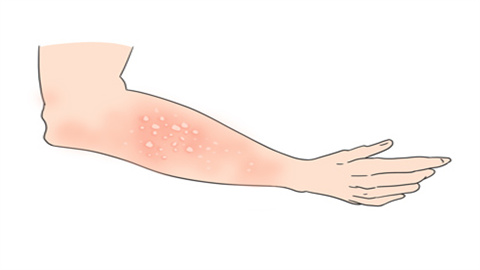What are the differences between early symptoms of urticaria and eczema?
Generally, the early symptoms of urticaria and eczema are manifestations of two different skin conditions, with differences in rash morphology, onset characteristics, degree of itching, affected areas, and causes. If skin discomfort occurs, it is recommended to make a judgment based on specific symptoms and seek timely medical attention when necessary. The specific analysis is as follows:
1. Rash Morphology
In the early stages of urticaria, wheals can be observed, which appear as raised, pale red or white patches varying in size and irregular in shape, with clear boundaries. They may exist in isolation or merge into sheets and usually disappear within several hours, leaving no marks after resolution. In contrast, eczema often presents with papules and vesicles on a background of erythema in its early stages, sometimes accompanied by blisters. The rash is dense with indistinct borders and may exude fluid and crust after scratching. As the condition progresses, thickening and roughness of the skin may occur.
2. Onset Characteristics
Early symptoms of urticaria appear suddenly, with wheals rapidly emerging and subsiding quickly, restoring the skin to normal. However, the condition tends to recur easily. In comparison, eczema develops more slowly, with rashes gradually appearing and worsening over time. It has a longer disease course and does not resolve quickly. Rashes often persist or recur, and pigmentation or other marks may remain after the rash subsides.

3. Degree of Itching
Itching in the early stages of urticaria is intense and often unbearable, increasing with the appearance of wheals and temporarily subsiding as the wheals fade. Early eczema also causes noticeable itching, although it is generally less severe than urticaria. The itching persists and may intensify with heat, moisture, or scratching.
4. Affected Areas
In the early stages of urticaria, wheals can develop on any part of the body, including the trunk, limbs, and face. The affected areas are not fixed and may change with each episode. In contrast, eczema commonly occurs on the head and face, behind the ears, hands, feet, forearms, and lower legs. It often appears symmetrically distributed. For example, hand or leg eczema usually affects specific areas.
5. Causes
Early urticaria is often related to allergies, such as consuming seafood, nuts, eggs, or exposure to allergens like pollen or animal fur. Infections, temperature changes, emotional stress, and other factors can also trigger it. Eczema has a more complex etiology, often associated with genetic factors, abnormal immune function, and impaired skin barrier function. Environmental factors such as dampness, stuffy heat, contact with detergents, cosmetics, and other chemicals, as well as infections, may also trigger eczema.
In daily life, it is important to avoid known allergens, maintain clean and dry skin, and avoid scratching. If symptoms suggestive of these conditions appear, do not take medication on your own to avoid worsening the condition. If symptoms persist or worsen, promptly visit a dermatologist at a hospital for a clear diagnosis before undergoing targeted treatment.






